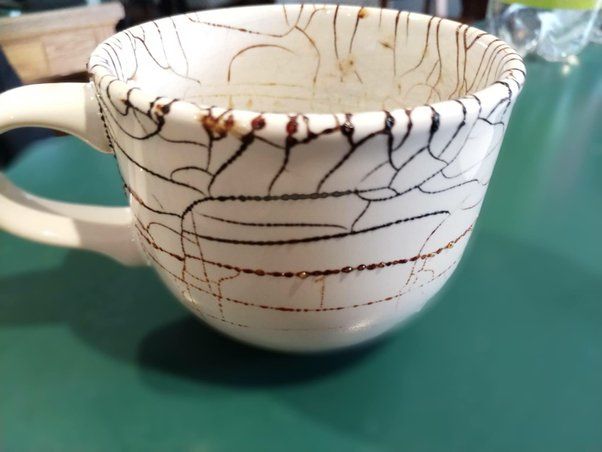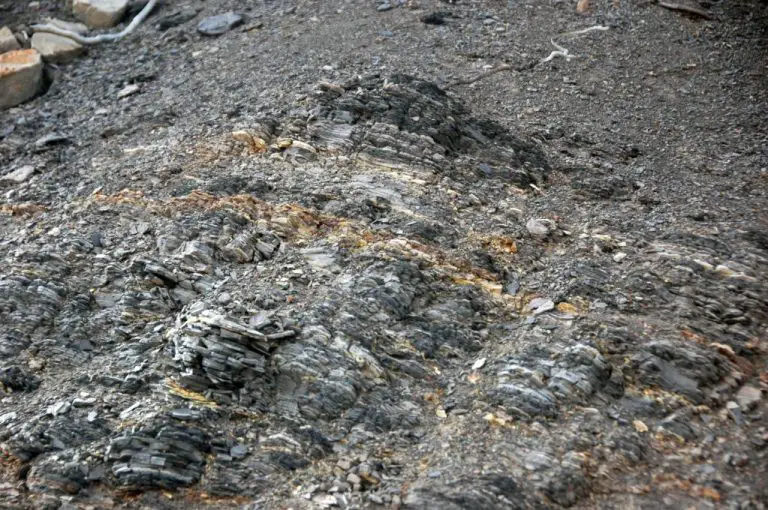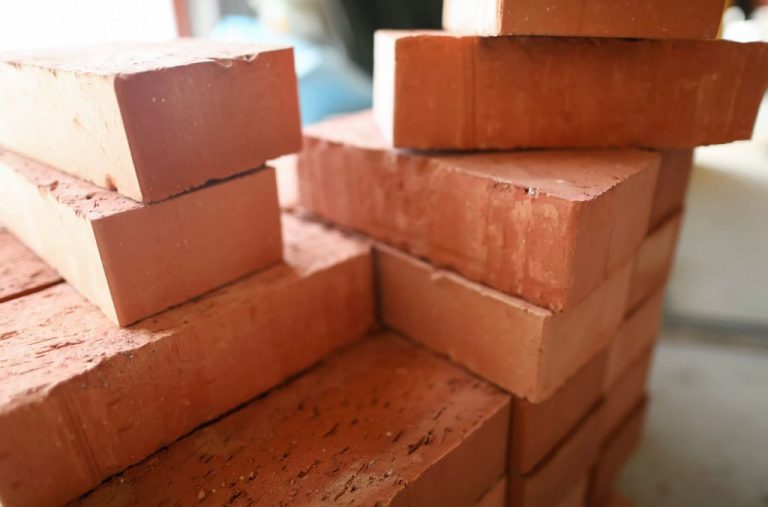What Is Natural Air Dry Clay Made Of?
What is Air Dry Clay?
Air dry clay, also known as modeling clay, is a non-hardening modeling material made primarily from cellulose-based components. Unlike clays that require firing in a kiln to harden, such as pottery clay, air dry clay dries and hardens at room temperature just by being exposed to air.
The main ingredients in air dry clay are cellulose-based materials like flour, paper pulp, cornstarch, and natural fibers. These ingredients bind together to create a malleable dough-like clay that retains its shape as it air dries. Fillers like sawdust or wood pulp may be added to give the clay more texture and absorbency.
The key difference between air dry clay and pottery clay is that air dry clay does not require firing in a kiln. It also does not shrink or crack as it dries. Additionally, air dry clay is re-moldable even when dry, by just adding a bit of water. In comparison, firing permanently hardens pottery clay into a ceramic material that cannot be remolded once dry.
History of Air Dry Clay
Air dry clay first emerged in the 1930s as a modeling material that could dry at room temperature without needing to be baked in a kiln. It provided an accessible, affordable clay alternative to artists and hobbyists who didn’t have access to a kiln for firing clay.
Some key innovations in air dry clay history include:
- In the 1930s, art suppliers began selling simple homemade air dry clay recipes using ingredients like glue, cornstarch, and baby oil.
- In the 1950s, manufactured commercial air dry clays started being mass produced and sold, offering improved consistency and quality over homemade versions.
- Polymer clays were introduced in the 1990s, giving artists durable, versatile new air dry clays that didn’t need sealing afterwards.
- More recent innovations have focused on creating clays in an array of colors, scents, and textures to appeal to crafters and DIYers.
While the materials and manufacturing have evolved over the decades, air dry clay has remained popular for its accessibility, ease of use, and wide range of artistic applications.
Benefits of Air Dry Clay
One of the best features of air dry clay is that it is very safe and non-toxic, making it ideal for use by children or anyone with sensitivities to standard oven-baked clays. Since air dry clay does not require baking, firing, or any heat to dry and harden, it does not release fumes or toxins. The main ingredients in most air dry clay recipes are natural materials like flour, salt, cream of tartar, and water.
Air dry clay is also extremely lightweight and portable. You can take it anywhere without lugging around a heavy bag of clay. It’s easy to transport projects before they fully dry or ship completed sculptures. The lightweight nature also makes air dry clay less prone to cracking and breakage.
As the name implies, air dry clay dries naturally at room temperature as it is exposed to air. There is no need for an oven or other special equipment to set the clay. It will harden on its own within 24-72 hours. This allows maximum flexibility to sculpt and shape pieces over time before they fully cure.
Common Uses for Air Dry Clay
Air dry clay is ideal for crafts, DIY projects, and school art classes. Its versatility and ease of use make it perfect for sculpting and crafting by both kids and adults.
Some common uses of air dry clay include:
-
Crafts and DIY Projects: From jewelry, figurines and decorative items to bowls, vases and more, air dry clay is great for all kinds of arts and crafts. Hobbyists enjoy using it for polymer clay projects. Its moldability makes it easy to hand build craft items. Many people also use cutters and molds with air dry clay.
-
School Art Classes: Teachers often use air dry clay in elementary and middle school art curriculums. It’s an excellent choice for teaching sculpting techniques and 3D design skills. Air dry clay is also safer and easier to use than traditional clays that require firing. Kids can bring their air dry clay creations home after they’ve dried.
-
Sculptures and Pottery: While it doesn’t provide the permanence of clays that require firing, air dry clay works wonderfully for creating free-standing sculptures, wall hangings, bowls, vases, cups, plates and other ceramic artworks. The finished pieces are lightweight yet sturdy. Air dry clay is also available in colorful options.
From simple DIY crafts to elaborate sculptural works, air dry clay is an accessible, versatile material for all kinds of creative projects and art mediums.
Types of Air Dry Clay
There are several types of air dry clay based on materials and ingredients, including:
Polymer clays like Crayola Model Magic are made out of polyvinyl acetate, a type of plastic. They are extremely malleable and fun to sculpt with. Polymer clays air dry into a permanent solid form.
Paper or cellulose clays use cellulose fibers or paper pulp ingredients. Cellulose clays are lightweight, non-toxic, and work well for sculpting. They harden as the water evaporates.
Derivatives of natural clays use minerals like kaolin or bentonite clay combined with cellulose or paper pulp. This makes a hybrid clay that is moldable and dries hard and durable. Natural clay derivatives retain some qualities of regular pottery clays.
Making Air Dry Clay
Making your own air dry clay at home is easy, affordable, and customizable. The basic ingredients are simple household materials like glue, cornstarch, and water. By making your own clay, you can create any color or consistency you need for projects.
A basic air dry clay recipe calls for:
- 1 cup glue (white school glue or clear glue works best)
- 2 cups cornstarch
- 1 cup water
- Food coloring, acrylic paint or tempera powder for coloring (optional)
To make the clay, mix the glue and water in a large bowl. Add the cornstarch gradually while stirring continuously to prevent lumps. Knead for a few minutes until the mixture is smooth. Divide the clay into sections to color separately if desired. Knead in a few drops of food coloring or acrylic paint to achieve the desired hue.
Tips for best results:
- Use warm water for easier mixing
- Sift the cornstarch to remove any lumps before adding
- Knead thoroughly until the clay is smooth and pliable
- Avoid over-mixing to prevent the clay from getting sticky
- Store unused clay in an airtight container
- Left out clay will dry; rehydrate with water as needed
By following some simple recipes, you can easily make your own customizable air dry clay at home. Experiment with colors and textures to create unique projects.
Working with Air Dry Clay
Air dry clay is a very versatile material that can be sculpted, rolled, molded, and shaped in many ways. Here are some tips for working with air dry clay:
Sculpting, Rolling, and Molding Techniques
Air dry clay can be pinched, rolled, cut, stamped, sculpted and molded just like any other clay. It is easy to work with using your hands and simple household tools. Roll slabs using a rolling pin and cut shapes using cookie cutters or a craft knife. Blend and smooth seams by rubbing pieces together. Add texture by pressing objects into the surface or using clay sculpting tools.
Storage and Preservation
To maintain a usable consistency, store unused air dry clay in an airtight container or sealed plastic bag. Keep it away from direct sunlight and extreme temperatures. Adding a damp paper towel to the storage container can help prevent drying out. Finished air dry clay sculptures should be sealed with varnish or clear acrylic spray paints for protection and longevity.
Painting and Finishing
Once completely dry, air dry clay can be painted with acrylic craft paints. Primer helps the paint adhere better. Sand any rough areas before painting for a smooth finish. Clear finishes like polyurethane can be used for a glossy coating and to protect paint. Air dry clay can also be decorated using markers, glitter glue, and other mixed media materials.
Air Dry Clay Brands
There are many different brands of air dry clay on the market. Some of the most popular and widely available brands include:
Crayola Air Dry Clay
Crayola is one of the most well-known and trusted names in art supplies for kids. Their air dry clay is an affordable option that comes in a variety of bright colors. It air dries smoothly and finishes with a nice texture. Crayola air dry clay is non-toxic and easy for kids to work with.
ACTIVA Air Dry Clay
ACTIVA is a leading brand when it comes to air dry clays. They offer smooth, lightweight, non-toxic clays in terracotta and white. ACTIVA clay is versatile and can be painted, sealed, and finished when dry. It’s a great choice for detailed sculptures and jewelry making.
Makin’s Clay
Makin’s is a top brand for air dry polymer clay. Their clay is available in vibrant colors that dry hard and durable. Makin’s clay finishes with a smooth, porcelain-like texture that takes acrylic paints well. It’s an excellent choice for crafting detailed figurines and jewelry.
When choosing an air dry clay brand, consider the colors offered, texture, finish, and quality. More affordable clays like Crayola work well for casual kids’ projects while brands like ACTIVA and Makin’s are ideal for more refined works and jewelry making.
Air Dry Clay Projects
Air dry clay is a fun, creative material that’s perfect for arts and crafts projects, especially for kids. Here are some great air dry clay project ideas:
Animals
Kids love making animals out of air dry clay. Let their imaginations run wild creating dogs, cats, birds, reptiles, farm animals, dinosaurs, unicorns, or any animal they can dream up. Air dry clay is easy for little hands to mold and shape.
Jewelry
Handmade jewelry makes a great gift or keepsake. Roll clay into beads, pendants, charms, and other jewelry components. Add beads, glitter, and found objects to make each piece unique. String together with cord or wire when dry.
Statues and Figurines
Sculpt your own mini statues, figurines, and action figures. Make fairies, gnomes, superheroes, favorite TV/movie characters, or original creations. Let dry fully before painting details.
Bowls, Vases, and Containers
Construct functional vessels like bowls, vases, cups, and trinket boxes. Decorate with stamps, texture, or impressed designs. These make great Mother’s Day and Father’s Day gifts.
Magnets
Make custom magnets for the fridge or magnetic boards. Use cookie cutters or sculpt shapes like stars, hearts, and flowers. Insert a magnet on the back before drying.
Mini Plants and Gardens
Design adorable miniature gardens with handmade clay pots and plants. Let kids create their own fairy or dinosaur gardens with tiny flowers, trees, mushrooms, and creatures.
Frequently Asked Questions
Here are some common questions people have about using, storing, and buying air dry clay:
Using Air Dry Clay
How long does air dry clay take to dry?
On average, air dry clay takes 24-48 hours to fully dry and cure. Thinner pieces may dry faster while thicker pieces can take 72 hours or longer. Cool, humid environments can prolong drying time.
Can you use air dry clay for jewelry making?
Yes, air dry clay is commonly used to make jewelry like earrings, pendants, beads, and more. Let pieces dry fully before wearing or applying a sealer.
Does air dry clay shrink when it dries?
Air dry clay can shrink slightly during the drying process, usually about 10% from its original size. Account for some shrinkage when modeling your pieces.
Storing Air Dry Clay
How should you store unused air dry clay?
Store unused air dry clay in an airtight container or sealed plastic bag. Keep it in a cool, dry area away from direct sunlight and heat to prevent premature drying.
Does air dry clay expire?
Air dry clay can dry out over time but it does not really expire. If stored properly, it can last for years. You may need to recondition overly dried out clay before use by kneading in water.
Can you freeze or refrigerate air dry clay?
Yes, freezing or refrigerating unused air dry clay can help extend its shelf life by slowing down the drying process. Allow it to reach room temperature before use.
Buying Air Dry Clay
Where can you buy air dry clay?
Air dry clay is widely available at local craft stores, art supply stores, online retailers like Amazon, and directly from clay manufacturers. Buy from reputable sellers.
Which brand of air dry clay is best?
Top brands include Sculpey, Crayola, Activa, Makins, and Darice. Consider the type of project and your skill level when selecting a brand. Ask other crafters for recommendations too.
Is air dry clay safe for kids?
Most major air dry clay brands are non-toxic when dry. Supervise kids when using to prevent accidental ingestion while clay is still wet. Follow manufacturer safety guidelines.





